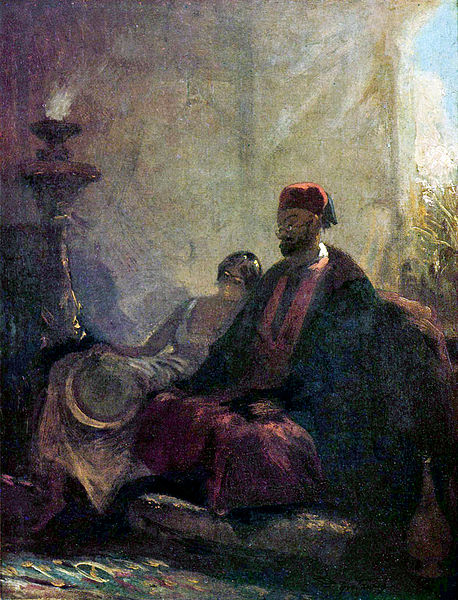Harem, hÄremumono (ãƒãƒ¼ãƒ¬ãƒ ã‚‚ã®) (from harem), broadly, is an ambiguously-defined subgenre of anime and manga characterized by a protagonist surrounded, usually amorously, by three or more members of the opposing sex and/or love interests. The most common and practically tantamount scenario is a male-oriented harem series where the main male character is surrounded by a group of females; when it is a female-oriented harem series, it is informally referred to as a reverse harem, or gyakuhÄremu (逆ãƒãƒ¼ãƒ¬ãƒ ). Examples of harem anime and manga include Love Hina, Tenchi Muyo! Ryo-Ohki, Sekirei, Rosario + Vampire, To Love-Ru and Princess Lover!, while examples of reverse harem series include Fruits Basket, Ouran High School Host Club, and Brothers Conflict.
More recent variants include polyamorous characters and removing the protagonist's opposing sex and/or gender identity to better appeal to a more broadly diverse audience, such as futanari-oriented harems, yuri-oriented harems (as with Iono-sama Fanatics), and yaoi-oriented harems (as with Gakuen Heaven).
Structure
.png)
Because romance is rarely the main focus of an entire series, harem structure is ambiguous. The most distinguishable trait is arguably the group of girls who accompany, and in some instances cohabitate with the boy, and while intimacy is just about customary, it is never necessary; when it is present, there must be a minimum of two girls who express it. Additionally, it is not essential for there to be one exclusive boy; many can exist as long as they are given less attention or the story calls for an unusually obscure sex ratio.
Harem ending

Some visual novels offer a "harem ending" route, where the main character pursues a romantic relationship with multiple other characters simultaneously, with the consent of the other characters. In some cases, the harem ending is unavoidable.
Notes

- a. ^ "Series" implies any that are designated as a harem.
References

Further reading

- Brenner, Robin E. (2007). Understanding Manga and Anime. Westport, Connecticut: Libraries Unlimited. pp. 82, 89, 112, 297. ISBN 978-1-59158-332-5. OCLC 85898238.Â
- Drummond-Mathews, Angela (2010) "What Boys Will Be: A Study of Shonen Manga" in Johnson-Woods, Toni (e.d.) Manga: An Anthology of Global and Cultural Perspectives Continuum International Publishing Group pp. 69â€"70. ISBN 978-0-8264-2938-4

Posting Komentar